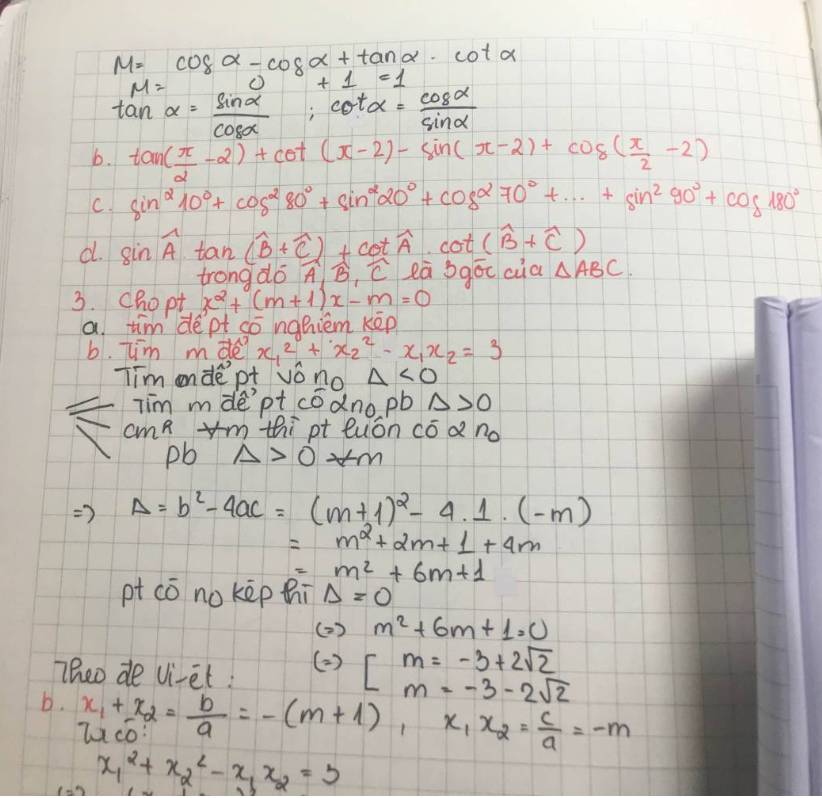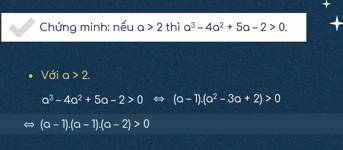
Hãy nhập câu hỏi của bạn vào đây, nếu là tài khoản VIP, bạn sẽ được ưu tiên trả lời.


9h30 Ha Noi time = 3 h 30 Paris time cùng ngày
lên máy bay lúc 3h30 Paris time và đến nơi là 6h30 ngày hôm sau.
Vậy tính ra là ngồi trên máy bay, chuyển đổi máy bay, transis chuyển tiếp ở các sân bay ...dùng cả thảy là 27 tiếng.
....
6h30 sáng Paris VN là 12h30 trưa cùng ngày.
ngồi trên máy bay chỉ có 12 tiếng thôi, nếu bay thẳng từ HÀ NỘI đến Paris Charles de Gaulle Airport. Nếu đi máy bay dừng ở Thái lan, HongKong hay Tân Sơn Nhất thì chờ thêm cả chục tiếng đồng hồ !

điều kiện \(\left\{{}\begin{matrix}x\ne-2\\x\ne1\end{matrix}\right.\)
Đặt \(\dfrac{x-1}{x+2}=p\left(p\ne0\right)\) và \(\dfrac{x-3}{x+2}=q\), khi đó pt đã cho trở thành \(p^2+q-2.\left(\dfrac{q}{p}\right)^2=0\) (vì \(\dfrac{q}{p}=\dfrac{\dfrac{x-3}{x+2}}{\dfrac{x-1}{x+2}}=\dfrac{x-3}{x-1}\))
\(\Leftrightarrow p^2+q-\dfrac{2q^2}{p^2}=0\)
\(\Leftrightarrow p^4+p^2q-2q^2=0\) (do \(p\ne0\) nên ta có thể chia cả 2 vế của pt cho \(p\))
\(\Leftrightarrow p^4-p^2q+2p^2q-2q^2=0\)
\(\Leftrightarrow p^2\left(p^2-q\right)+2q\left(p^2-q\right)=0\)
\(\Leftrightarrow\left(p^2-q\right)\left(p^2+2q\right)=0\)
\(\Leftrightarrow\left[{}\begin{matrix}p^2-q=0\\p^2+2q=0\end{matrix}\right.\)
Nếu \(p^2-q=0\) thì \(\left(\dfrac{x-1}{x+2}\right)^2-\dfrac{x-3}{x+2}=0\)
\(\Leftrightarrow\dfrac{x^2-2x+1}{\left(x+2\right)^2}-\dfrac{\left(x-3\right)\left(x+2\right)}{\left(x+2\right)^2}=0\)
\(\Leftrightarrow\dfrac{x^2-2x+1-x^2-2x+3x+6}{\left(x+2\right)^2}=0\)
\(\Leftrightarrow\dfrac{-x+7}{\left(x+2\right)^2}=0\)
\(\Rightarrow x-7=0\)
\(\Leftrightarrow x=7\left(nhận\right)\)
Nếu \(p^2+2q=0\) thì \(\left(\dfrac{x-1}{x+2}\right)^2+2.\left(\dfrac{x-3}{x+2}\right)=0\)
\(\Leftrightarrow\dfrac{x^2-2x+1}{\left(x+2\right)^2}+\dfrac{2\left(x-3\right)\left(x+2\right)}{\left(x+2\right)^2}=0\)
\(\Leftrightarrow\dfrac{x^2-2x+1+2x^2+4x-6x-12}{\left(x+2\right)^2}=0\)
\(\Leftrightarrow\dfrac{3x^2-4x-11}{\left(x+2\right)^2}=0\)
\(\Rightarrow3x^2-4x-11=0\) (*)
Ta thấy \(\Delta'=\left(-2\right)^2-3.\left(-11\right)=37>0\)
Do đó pt (*) có 2 nghiệm phân biệt:
\(x_1=\dfrac{2+\sqrt{37}}{3}\left(nhận\right)\)
\(x_2=\dfrac{2-\sqrt{37}}{3}\left(nhận\right)\)
Vậy tập nghiệm của pt đã cho là \(S=\left\{7;\dfrac{2\pm\sqrt{37}}{3}\right\}\)

\(A=\dfrac{x^3-x^2-x+8}{x^2-3}=\dfrac{x^3-3x-x^2+3+2x+5}{x^2-3}=\dfrac{\left(x^2-3\right)\left(x-1\right)+2x+5}{x^2-3}=x-1+\dfrac{2x+5}{x^2-3}\)
\(A\) nguyên mà \(x\) nguyên nên \(\dfrac{2x+5}{x^2-3}\) nguyên.
suy ra \(\dfrac{\left(2x+5\right)\left(2x-5\right)}{x^2-3}=\dfrac{4x^2-25}{x^2-3}=\dfrac{4x^2-12-13}{x^2-3}=4-\dfrac{13}{x^2-3}\) nguyên
mà \(x\) nguyên nên \(x^2-3\inƯ\left(13\right)\Rightarrow x\in\left\{\pm1;\pm4\right\}\)
Thử lại có \(x=4\) thỏa mãn.


bài này lớp 9 mà